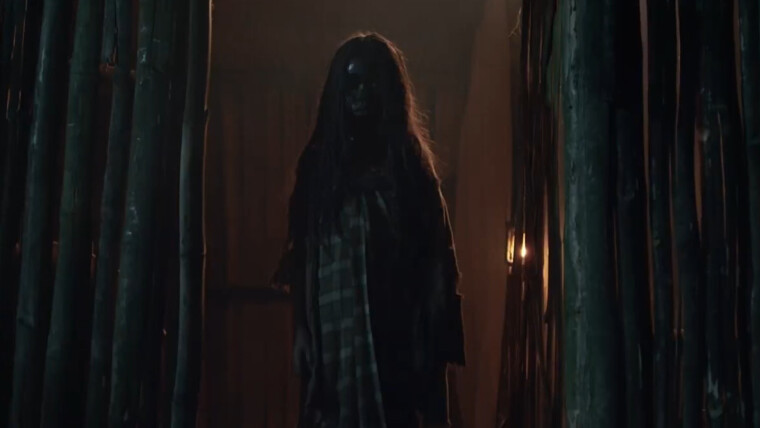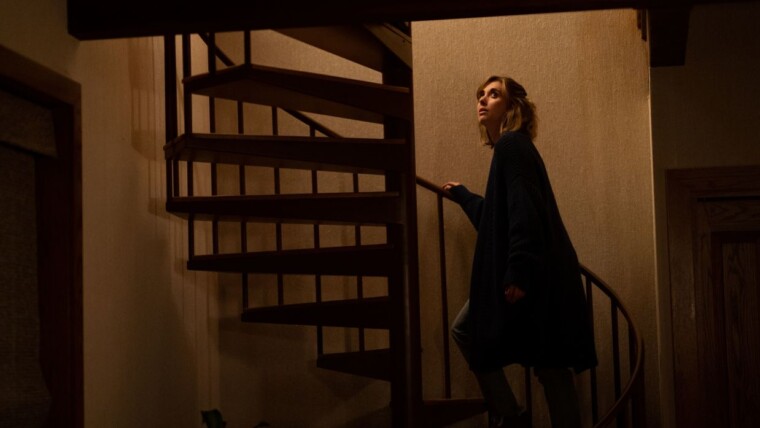Most Malaysian films make me angry. But every once in a while we get a local film that actually feels like a motion picture. A film that doesn’t wreak of a back-alley hobo’s faecal matter. A film that vibes like it’s constructed by individuals who sees filmmaking as a craft. Kabir Bhatia’s Pulang is one such movie. This isn’t to say that Pulang is a coup de maître in cinema. It isn’t; not even close. But it is refreshing to see a local film that doesn’t make you regurgitate.
Set over a period of six decades Pulang opens with an elderly woman on her deathbed. She informs her grandson of her last dying wish — to find out where her husband is (and if possible, why he never returned home) — before detailing the events that unfolded over the years, as we transition to a flashback ala Titanic. We see a woman fall in love with a fisherman at first sight. That love is reciprocated and eventually blooms into a marriage (Back in the day, people do the marrying before the dating and the fu*king). One day, the husband decides to join a shipping company and sail around the globe, leaving his wife at home, waiting for his promised return… for 61 long years. This is an interesting story in itself. That it’s inspired by real-life events, makes it all the more fascinating.
Right from the get-go, we get the sense that there’s genuine care put into this film, aesthetically speaking at least. With cinematographer Zambree Haras in his corner, Kabir Bhatia has forged a gorgeous film, with plenty of interesting angles that successfully arrest the beauty of the locations our characters find themselves in. And more importantly, the ambience. Compare the look of the village, so heavenly and pure — it’s home — to the murkiness of the forests during the Japanese invasion or the coldness and greyness of the ships’ interiors.
But it is during the action sequences, where Kabir Bhatia’s talents are on full display. Like the riveting scene where Lum (Alvin Wong) and Othman (Remy Ishak) — both of whom, by the way, act their asses off — scurry through the forest, trying to escape the vile Japanese soldiers. Or the well choreographed and shot fight scene that takes place onboard a ship. You won’t find ugly cuts and shaky cam nonsense here. That fight scene and a couple of other high octane action sequences that are scattered throughout the film’s 120-minute runtime feel weighted and real, even when the CGI doesn’t work.
There is one action scene in particular that involves a burning ship in which the CGI is not only noticeable but ugly. I can’t give it a pass just because it’s a local film, but I will say that despite its ugliness, I’m glad Kabir Bhatia made the attempt. It’s important that filmmakers try and push the boundaries of what the industry is capable of, only then can it be improved upon.

That said, Pulang feels like a Chiu Keng Guan film (specifically The Journey and Ola Bola). Large portions of the film would function better as a cuti-cuti Malaysia ad than it does a film. All style, but lacking where it matters most. The writing, by Mira Mustaffa and Ahmad Izham Omar, is unfocused. Who are we supposed to be following? Who are we rooting for? Is it Othman who’s lost at sea or Thom, the wife’s who’s left waiting for her man who may never return? We cut back and forth between the two, but never do we stick long enough to grow attached.
The gripping war sequence, the most interesting sequence in the film, ultimately adds nothing to the plot (it does, however, serve as a launch point for Othman and Lum’s friendship, and so I’ll give it a slight pass). Wouldn’t it have been better to use that 10 minutes or so to focus on the romance, instead? We should feel Thom’s frustration when Othman decides to sail, but we don’t, because they’re strangers to us and we didn’t grow with them on their romantic journey — a spellbinding shot of them slow dancing under the stars isn’t enough.
We don’t follow Othman’s journey as he sails across the seven seas. We catch glimpses in various timelines (Othman and Lum fighting a bunch of racist sailors. Othman saving people from a burning ship. An elderly Othman, living in a tiny room in a sailor’s bar). That formula is also used to show us what Thom (Puteri Aishah) is up to back at the fishing village. A couple of minutes of her getting worried. A couple of short scenes where she journeys across the world to find her husband. A couple of minutes of her getting angry. A brief moment where the slightly older Thom flirts with her son’s teacher. This jagged, hazy way of telling the story does a great job at building a mystery — I was genuinely curious throughout the film, wondering why Othman isn’t returning home — but it prevents us from connecting to the characters and so, does a disservice to the big emotional beats the movie is trying to hit. It doesn’t help that the film every now and then cuts to the present, with the now-dying Thom and her grandson, who’s digging in his father’s old boxes for clues from yesteryear.
When the mystery finally unravels, it’s more “oh alright” then it is, “holy shit!” so what’s the point? When I reached the end of the line and looked back, it became clear to me that this film didn’t need to have a huge mystery to succeed, as the mystery isn’t the point. The romance is (or should’ve been).
Pulang desperately wants to wreck us emotionally. So desperate that it found the need to include a climactic sequence that is so convenient and so facepalm worthy, I couldn’t help but chuckle at the ridiculousness of it all. Kabir Bhatia wants to make us cry. But we don’t (or at least, I didn’t. There are many who claim this movie is an emotional roller coaster ride) because it lacks rawness. It lacks emotional weight. It lacks meaningful character arcs (or any character arc, really).

Over the course of the coming days and weeks, you’ll hear people talk about how great Pulang is for a Malaysian film. And as evident from my opening paragraph, I don’t disagree with that statement (though, I would substitute great with good). But that in and of itself isn’t a huge compliment, not one our industry should be striving for anyway. We should be striving for ‘great movie, period.’ And that, Pulang most definitely isn’t. Its cinematography is stellar, but storytelling wrinkly and uneven. It’s mostly well acted, but its characters have no arcs. Ultimately I was more impressed with how Pulang looks than how the movie made me feel. It’s a gorgeous movie with a heart that only beats occasionally.
* Earlier this year saw Lee Chong Wei: Rise of the Legend. Now that is a very, very good movie. One that will leave you swimming in a pool of your own tears.
Hey you! Yes you, hot stuff. Like my article? Leave a comment below and let me know what you think. Also, don’t forget to share it with your buds. And if you’d like to talk movies with me you can hit me up on Twitter or Instagram here: @dashtalksmovies







